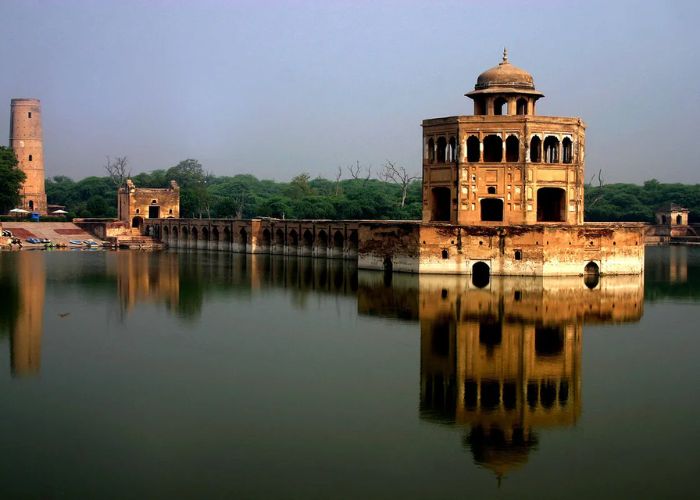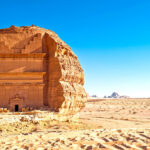Hiran Minar History: The Hiran Minar remains as a demonstration of the rich history and dynamic present of the Sheikhupura district in Pakistan’s Punjab locale. The interesting combination of Mughal and Persian engineering styles has entranced vacationers, archeologists, and antiquarians the same at this verifiable site. This essay will look at Hiran Minar’s history, purpose, design elements, and relevance as part of its historical investigation. Lets read below about “Hiran Minar History”
Hiran Minar History: A Storied Monument in History
Origins and Construction
The development of Hiran Minar, in a real sense “Deer Pinnacle” in English, was requested by Ruler Jahangir toward the start of the seventeenth hundred years. During Jahangir’s reign in 1606, this radiant design was built. The sovereign’s profound love for hunting and the outside drove him to choose to fabricate this landmark in memory of his dearest pet deer, Mansraj.
Hiran Minar was built on a great location for strategic reasons close to Lahore, the capital of the Mughal Empire. The development cycle was directed by the eminent Mughal designer, Sheik Ahmad. Because Jahangir enjoyed falconry and hunting, the imperial hunting grounds were close to the minaret.
Architectural Features
Hiran Minar is interesting among structures because of its combination of Mughal and Persian styles. The focal point of the landmark is a monstrous round water tank that has double capabilities as an elaborate component and a useful one. A causeway connects the tank to the central island and encircles it with a paved walkway.
In the island, the horizon is overwhelmed by its wonderful minar. A few nooks and specialties in the minar incorporate stone elephants, mirroring the sovereign’s commitment to these lofty animals. The Mughal interest with balance and math is obvious in the minar, which is a building work of art by its own doing.
The earthenware screens that round the island’s interstate make a demeanor of confinement and protection for the focal island. Hiran Minar’s visual appeal is enhanced by these exhibits, which feature floral and intricate geometric patterns.
Purpose and Significance
During its prime, Hiran Minar filled different needs. It was basically worked to honor Mansraj, the deer that Ruler Jahangir cherished. Obviously, the head has a delicate spot for creatures and need to honor their memory by building this colossal landmark to one of his pets.
What’s more, the majestic hunting fields were near Hiran Minar, so the head and his court could appreciate hunting, falconry, and other recreation sports. On hunting undertakings, the minar’s grand vantage point was great for considering the scene.
Past its down to earth utilizes, the Hiran Minar was huge emblematically. The stone elephants that ornamented the minar filled in as the two adornments and images of power and sway. As a portrayal of the magnificent may and grandness, elephants were typical in Mughal workmanship and design.
Historical Context
Simply by putting Hiran Minar with regards to the Mughal Realm’s set of experiences can its importance be completely valued. From the mid 1600s until the center of the 1800s, the Indian subcontinent was governed by the Mughals, a Turko-Mongol government with Persian starting points. A lot more noteworthy success occured for the domain under Jahangir’s rule than under his dad Akbar’s.
Alongside their political and military ability, the Mughal sovereigns were likewise humanitarian supporters of artistic expression and engineering. The Mughal rulers frequently charged the development of lavish manors, gardens, and fortresses. By combining form and function, the Hiran Minar exemplifies the Mughal commitment to building architectural masterpieces that would last for generations.
Legacy and Preservation
Researchers and travelers the same have consistently observed Hiran Minar to be a captivating area. The Mughal Domain’s impact and the craftsmanship of its developers are both shown by how long the landmark has stood.
Protecting Hiran Minar has been fundamentally important to expand its life expectancy. The minar and its encompassing region have been fastidiously safeguarded by those devoted to prehistoric studies and natural insurance. State funded training efforts on the landmark’s verifiable and social importance have been started to additional encourage a feeling of satisfaction and possession in the encompassing networks.
Tourism and Cultural Impact
Travelers from everywhere the world, including Pakistan, group to see Hiran Minar, which has as of late encountered a flood in prominence. The verifiable significance and stylish allure of this landmark make it a must-visit for anyone with any interest in Mughal design and the district’s rich social legacy.
The nearby local area will encounter the monetary repercussions of Hiran Minar’s worldwide notoriety as a vacationer location. Businesses like hotels, restaurants, and gift shops benefit from an influx of tourists because of the increased spending. Profit like these will go quite far towards paying for fixes and upkeep of the milestone.
Conclusion
Hiran Minar features the Mughal Realm’s creative ability, great size, and the heads’ singular inclinations. As well as being a design wonder and image of the regal may, this verifiable site will continuously change the scene of Pakistan since it is a remembrance to a treasured deer.
Hiran Minar’s distinctive design, which incorporates Persian and Mughal elements, is both distinctive and captivating. Due to its proximity to the Mughal capital, Lahore, its historical significance and connection to the royal family’s hunting and leisure activities are amplified.
Current conservation of Hiran Minar is both a design and social need. Trying to safeguard and advance this verifiable antique will guarantee that it will be accessible for a long time into the future to gain from and value its rich history.
Guests can step back so as to a former period when the Mughal Domain thrived and abandoned stunning designs like Hiran Minar as they wander around the pathways and respect the stone elephants that enhance the minar. I hope you like reading “Hiran Minar History”







